
Tips for Keeping Your Camera Cool on a Hot Summer’s Day
Let’s look at a few different methods you can employ to keep your camera cool on a hot summer’s day.
In the hot and dry summer of 2014, I had the unfortunate pleasure of shooting a (failed) web series with a RED ONE MX. It wasn’t unfortunate because of the hefty weight of the camera, nor was it the slow boot-up times (although both were detriments). It was unfortunate because the camera was prone to getting hot quickly and, as a result, the fans would kick into overdrive.
These fans were a sound recordist’s worst nightmare, as even when quietened during recording, they were still pretty audible. To combat this, RED ONE MX users took to placing cold gel packs on the camera to keep it cool, to avoid overheating, and keep fan noise to a minimum. At one point, I’m almost certain Element Technica either produced or was going to produce a rigging accessory to place ice packs onto the camera.
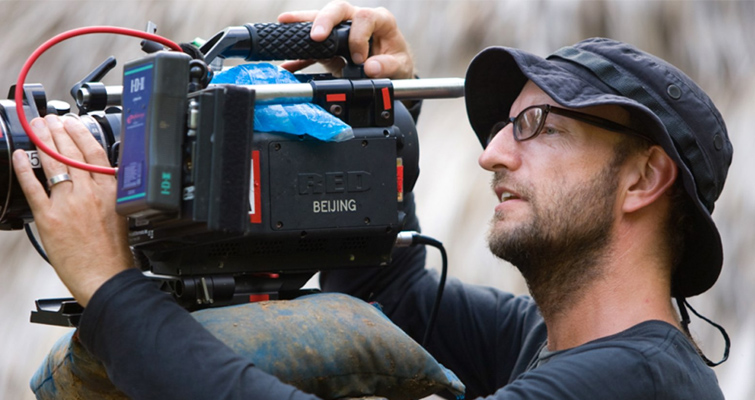
Since the RED ONE MX’s introduction, camera cooling has improved significantly. However, because camera cooling has improved doesn’t mean modern cameras aren’t prone to overheating (see Canon R5). Additionally, even when cameras can keep themselves cool, it’s usually at the cost of fans being ramped up to an audible level.
If you’re filming on a hot summer’s day in direct sunlight for a prolonged period of time, you may see at least a warning sign that the camera is becoming hot and needs to be cooled down.
Here are a few methods to keep your camera cool on a hot summer’s day.
Gel Packs
Running straight from what I used with my RED ONE, gel packs are still handy to lower the temperature of a camera. You can pick up gel packs (usually a set of two) for around $10. Place these packs in the freezer for a few hours, and then they’ll be ready to sufficiently cool your device.
While a gel pack will stay cold for at least one to two hours when pressed against the skin, you can expect this to be considerably less when used against a hot camera.
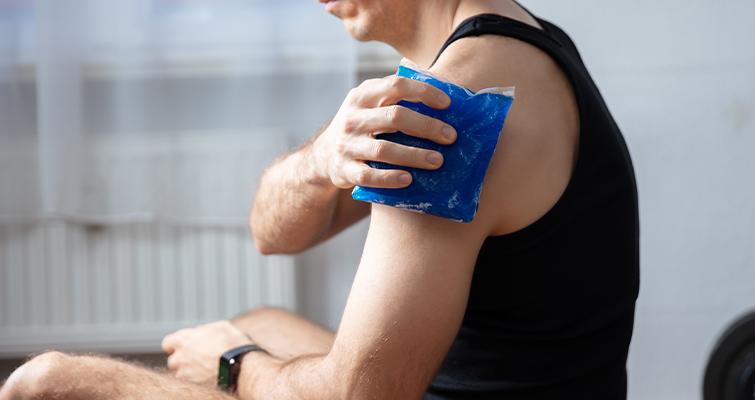
There are two things to note when using a gel pack. The first is to ensure you don’t cover the air vents dispersing the camera heat, as this will create an even bigger problem than simply having the camera overheating.
Secondly, depending on the size of your camera, you’re going to want to wrap the gel pack around the camera while warm, then maintain the shape when putting the pack into the freezer. With smaller cameras like the R5, there’s less surface area to position a gel pack. On something like the URSA 12K, you could easily place a flat gel pack on top of the camera.
Molding the camera’s shape onto the gel pack before freezing allows you to place the pack on the camera effortlessly without trying to balance the pad.
Ice Packs
Ice packs are the primitive cousin of gel packs and are primarily used for keeping food cool when you and the family have gone on a Sunday picnic.
Due to their size and weight, they aren’t ideal for placing on top of a camera. And, given they’re filled with tap water and then frozen, it’s not something you want near your camera to begin with.
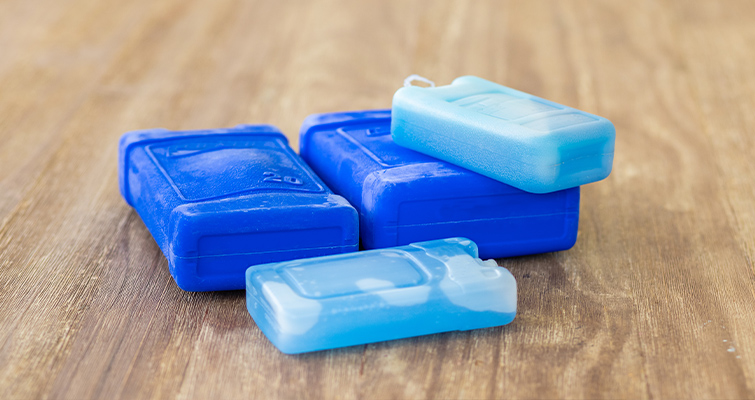
However, if you’re filming with a smaller camera and continually find yourself putting it back into your camera bag to take shelter from the sun, placing an ice pack in one of the bag’s pouches can help create a cooler environment for the camera.
Courtesy Flags and Other Shade Tools
If practically lowering the camera temperature isn’t feasible, you’ll have to look at ways to limit direct sunlight hitting the camera. Here are several methods.
If you’re working on a more extensive professional set, there will likely be personnel and equipment available to build you a courtesy flag.
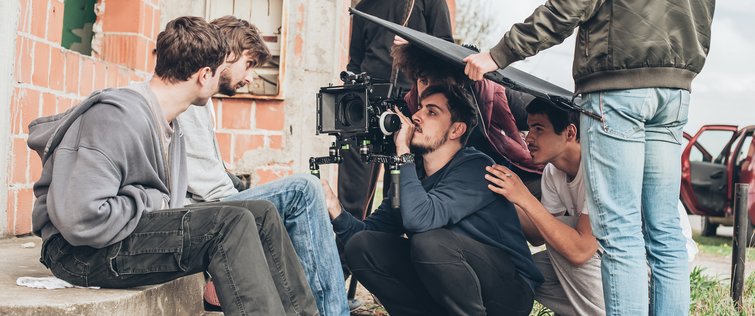
While it sounds majestic, a courtesy flag is nothing more than a regular grip flag. However, this isn’t intended to be used to shape light or negative fill. Instead, it creates shade for the crew who cannot move into the shade while working. You can also get a flag setup to keep the camera out of line for direct sunlight.
Of course, if you’re not financially able to do such a thing, any form of shade is excellent. If your buddy still owes you twenty bucks from last weekend, get him to hold a 5-1 reflector above the camera for an hour. Or, if you don’t want your friend to get off so lightly, you can purchase an inexpensive sports umbrella.
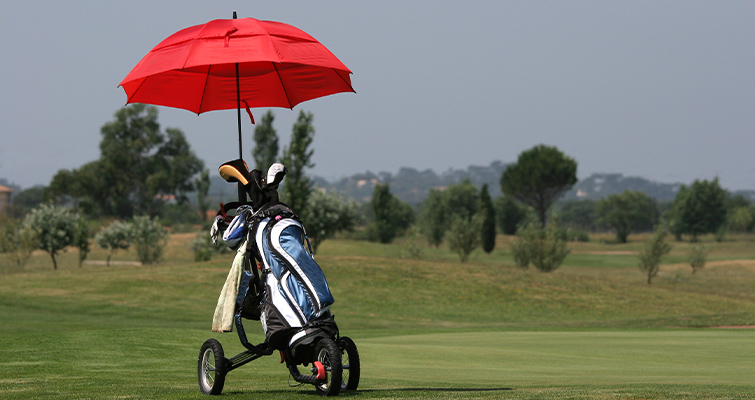
You will typically see these on golf carts. They’re umbrellas with either a grip or clamp at the bottom, allowing the golfer to attach the umbrella to the cart. But, we can use this to attach the umbrella to a tripod.
However, unlike a flag, the umbrella isn’t as easily controllable. As a result, you may see unwanted shadows cast into the scene if the camera is positioned close to the talent. Likewise, as seen in the photo example, these flags will be manufactured with a color fabric. Therefore be careful that the material doesn’t produce a color cast onto the scene too.
White Shoulder Case
Larger and heavier lenses are commonly painted white by the manufacturer to reflect sunlight to keep the lens cool. Using that methodology, some case and bag manufacturers—such as Porta Brace—have created white shoulder cases.

Now, these cases are primarily designed for broadcast cameras when used in scorching climates, so you won’t typically need to acquire one of these for your mirrorless (if they even produce these for such smaller cameras). But, for larger setups, it’s an excellent way to try and bounce some of that sunlight if you cannot stay under the shade.
Pop-up Canopy Tent
Question. How many extra hands do you have for your shoot? If you have at least one, look to invest in an EZ-UP or, as they’re more often known, a canopy tent. They’re portable tents that can be set up within minutes. And while they may initially look costly, you can pick up the smaller models, as seen in the image below, for less than $50.
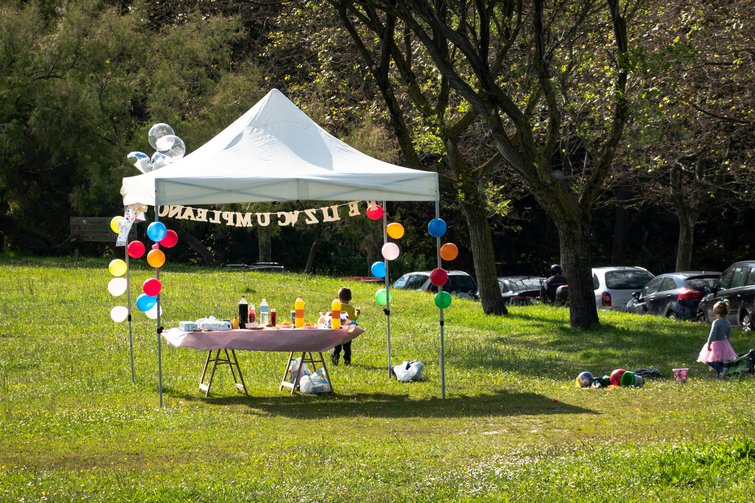
However, it’s a much larger tool to set up instead of a C-stand and flag. So, if you’re working in a confined outdoor space, it’s not ideal. But this is a good pick if you’re out in the countryside. It’s not only going to keep your camera in the shade but your cast and crew, as well.
Keeping the Camera Configuration Minimal
As I initially noted, camera technology has come a long way since the noisy, hot times of the RED ONE MX. In most circumstances, you should be fine if you’re not continuously filming directly in sunlight for hours. But, if you feel as though you’d rather not risk the chance of overheating your camera and you’re unable to do any of the above, look to minimize your rig to the smallest configuration possible.
With multiple accessories attached, you will create a larger surface area for the sunlight to heat and, additionally, have the battery generate more power for the accessories. By stripping the camera down to the core essentials—say a cage with a side handle and top handle—you can minimize the surface area and power consumption.
Importantly, Stay Safe
So, we’ve covered several elements on keeping your camera cool, but let’s be honest for a moment. Several countries worldwide are experiencing heat waves on a scale they haven’t felt before. Today, the 18th of July 2022, the UK is recording the hottest day on record.
For the first time temperatures of 40°C have been forecast in the UK and the Met Office has issued the first ever Red warning for exceptional heat.
Exceptional heat is expected to affect a large part of England on Monday and Tuesday, with temperatures likely in the high 30s C in some places and perhaps even exceeding 40°C.
Met Office
As filmmakers, there’s nothing worse than planning for a weekend shoot and seeing that the weather is set to be grey and miserable. Those long summer evenings filled with golden light are always a visual treasure trove. However, when temperatures are scorching beyond set records, it’s not worth risking your personal health to capture your footage because you’ve got some sunshine. There will always be another sunny day—and hopefully a cooler one.
Stay hydrated, stay cool, and stay safe.
For more tips on protecting your gear, check out these articles:
- The 6 Best Cases To Protect Your Video Gear
- Protect Your Camera From Dirt With Simple Household Items
- Why You Want to Use Both SSD and HDD for Video Storage
- You Dropped Your Camera in Water… Now What?
- 5 Tips for Taking Care of Your Lenses in Outer Space
Cover image by Marian Weyo.





